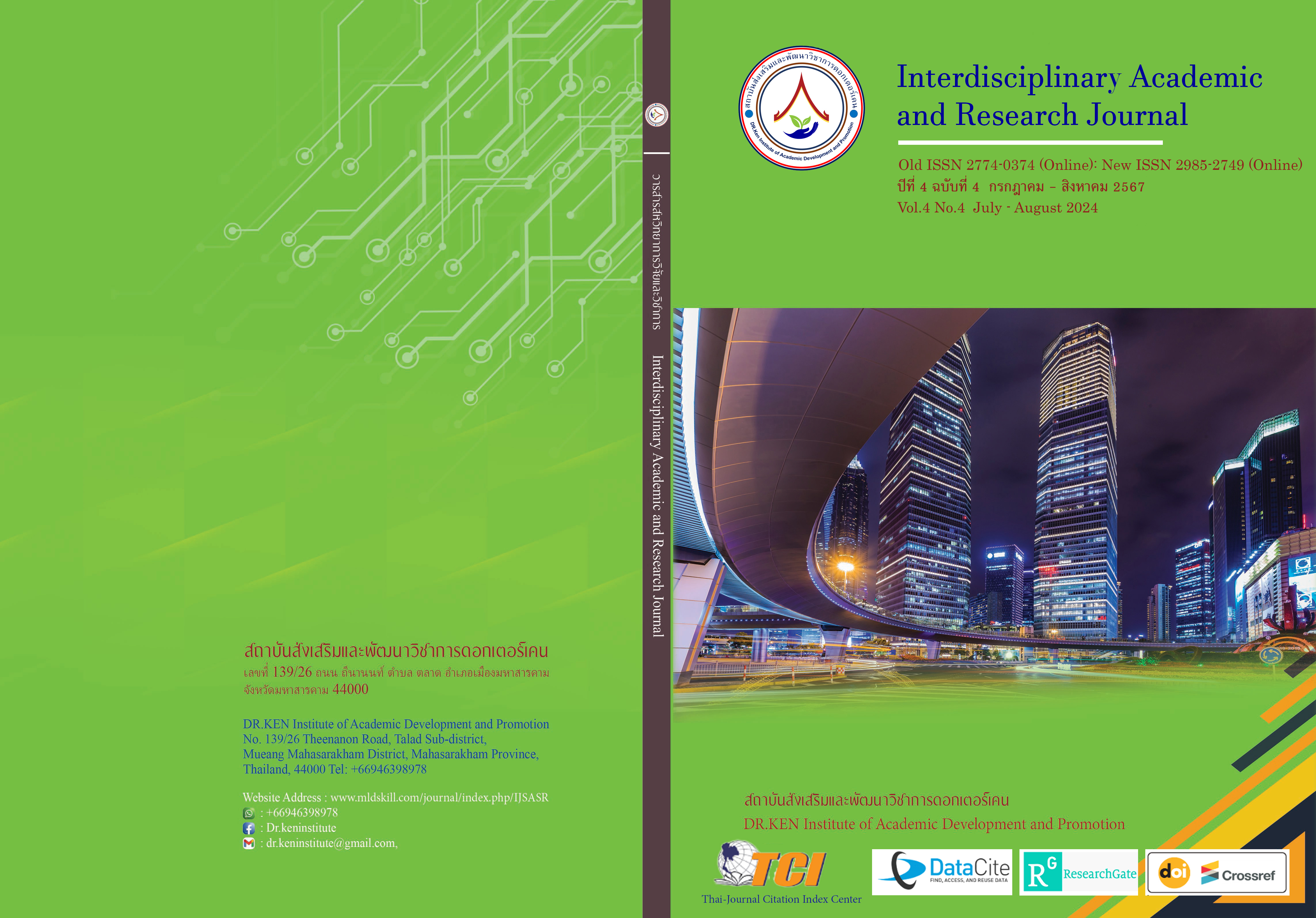Jingdezhen Ceramic Art Community Identity: Towards the Management of Contemporary Ceramic Art Streets in Zhushan District
DOI:
https://doi.org/10.60027/iarj.2024.276441Keywords:
Community Identity; , Ceramic; , Contemporary Art; , Street Art; , Community ManagementAbstract
Background and Aims: The purpose of this study is to explore the identity recognition of the Jingdezhen ceramic art community and its management in contemporary ceramic streets. The research delves into the historical evolution of Chinese ceramic art, the development of modern ceramic art in China, the characteristics of contemporary Chinese ceramic art, and the background of national policies. Additionally, it analyzes the characteristics of contemporary art communities in Jingdezhen, China, and identifies the identity recognition of the Taoyi Street community in Taoyang New Village. This includes recognition of the area's historical background, cultural identity, and the social lifestyles of its residents, aiming to facilitate improvements and the formulation of management plans. The management approach encompasses the overall revitalization of the area. A comprehensive manual detailing specific management plans has been developed to promote the sustainable development of the Taoyang New Village Taoyi Street community, ultimately enhancing the regional image of the Jingdezhen ceramic art community.
Methodology: The study involves interviews with numerous experts, tourists, and community residents. It employs literature analysis, field investigation, and interdisciplinary research methods, combined with theories of cultural and artistic management, to manage the cultural and artistic space of the Taoyi Street community in Taoyang New Village.
Results: Through the sorting of historical documents and the research and analysis of the important ceramic art community in Jingdezhen, this paper focuses on the culture and characteristics of the Taoyi Street Community in Taoyang Xincun, and finds that The contradictions and flaws in its development process, according to the theoretical foundation and local regional characteristics, this area has been carried out a new planning and art management, and a set of management manuals have been made. Most of the past studies have focused on ceramic materials or ceramic art design directions, and this study is more extensive and practical than other studies. To solve the practical problems faced by the spatial development of the ceramic art community in Jingdezhen, take the Taoyi Street community in Taoyang New Village, Jingdezhen as a case, and formulate a complete set of management plans to help the sustainable development of the ceramic art community.
References
Fang, L. (2000). Tradition and change: Field investigation of old and new folk kiln industry in Jingdezhen. Jiangxi People's Publishing House.
Li, L. (2015). Investigation and planning of street stalls in the old campus of Jingdezhen Ceramic Institute. Art Appreciation Journal.
Liu, P. (2001). Sustainable development theory and China's 21st century agenda. Meteorological Press.
Medley, M. (2016). Chinese porcelain. Cambridge University Press.
Scott, R. (2017). The Golden Age of Chinese Ceramics. Yale University Press.
Wu, L. (1993). Common knowledge of Jingdezhen ceramics. Science Popularization Press.
Zhang, G. (2013). Chinese ceramic art criticism. Hebei Fine Arts Publishing House.
Zhou, R. (2004). Jingdezhen ceramic customs. Jiangxi University Press.
Downloads
Published
How to Cite
Issue
Section
License
Copyright (c) 2024 Interdisciplinary Academic and Research Journal

This work is licensed under a Creative Commons Attribution-NonCommercial-NoDerivatives 4.0 International License.
Copyright on any article in the Interdisciplinary Academic and Research Journal is retained by the author(s) under the under the Creative Commons Attribution-NonCommercial-NoDerivatives 4.0 International License. Permission to use text, content, images, etc. of publication. Any user to read, download, copy, distribute, print, search, or link to the full texts of articles, crawl them for indexing, pass them as data to software, or use them for any other lawful purpose. But do not use it for commercial use or with the intent to benefit any business.
















.png)


